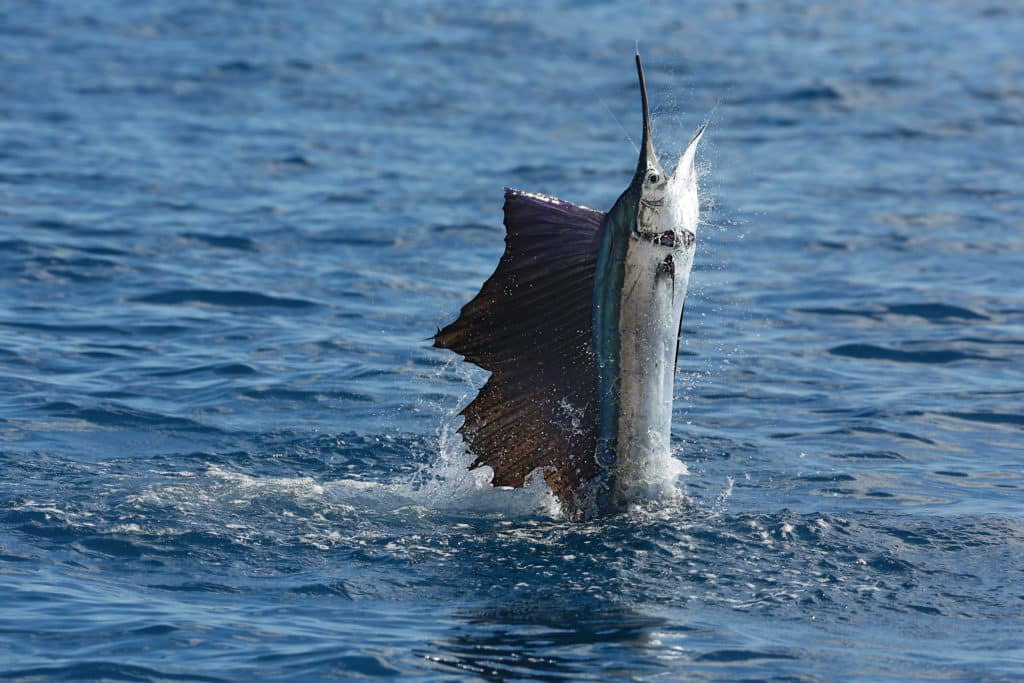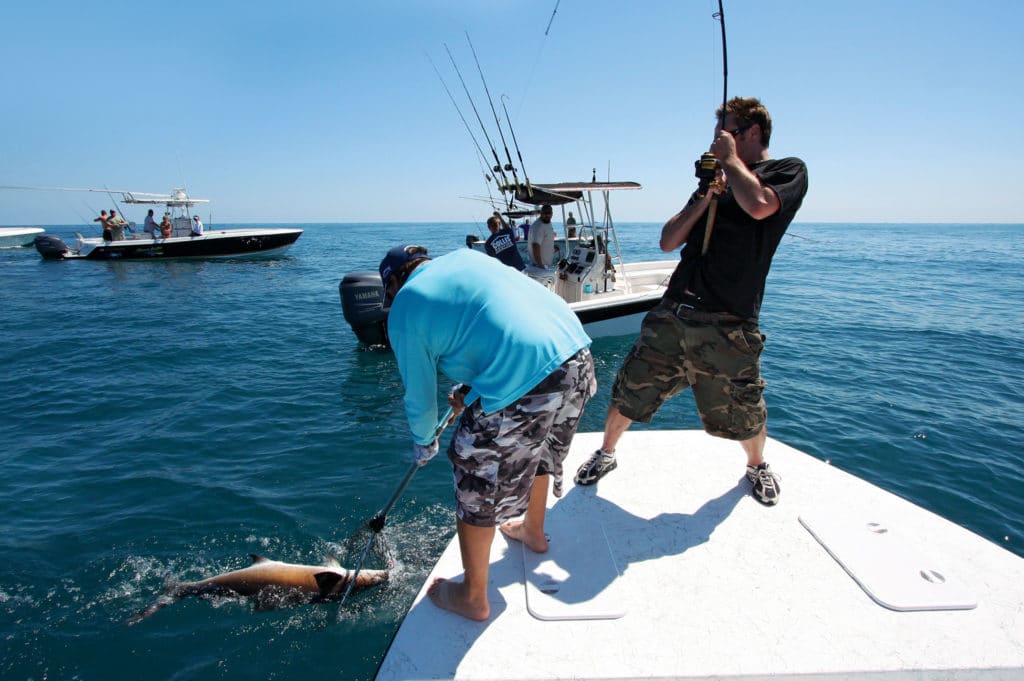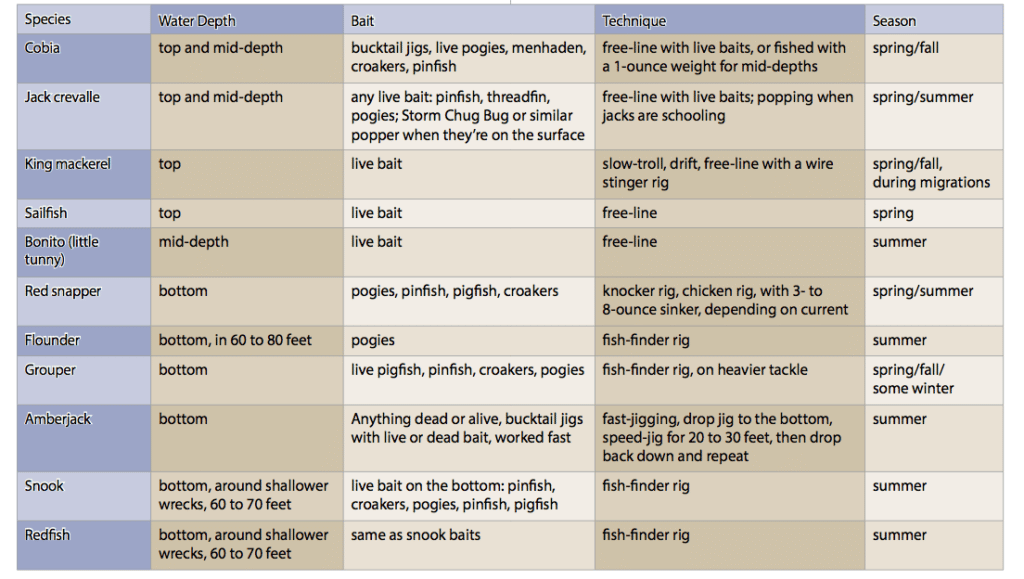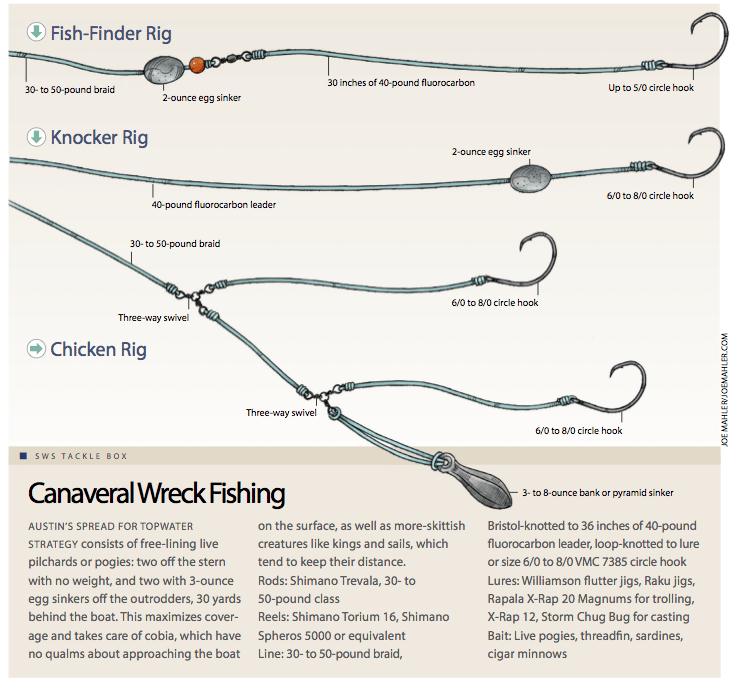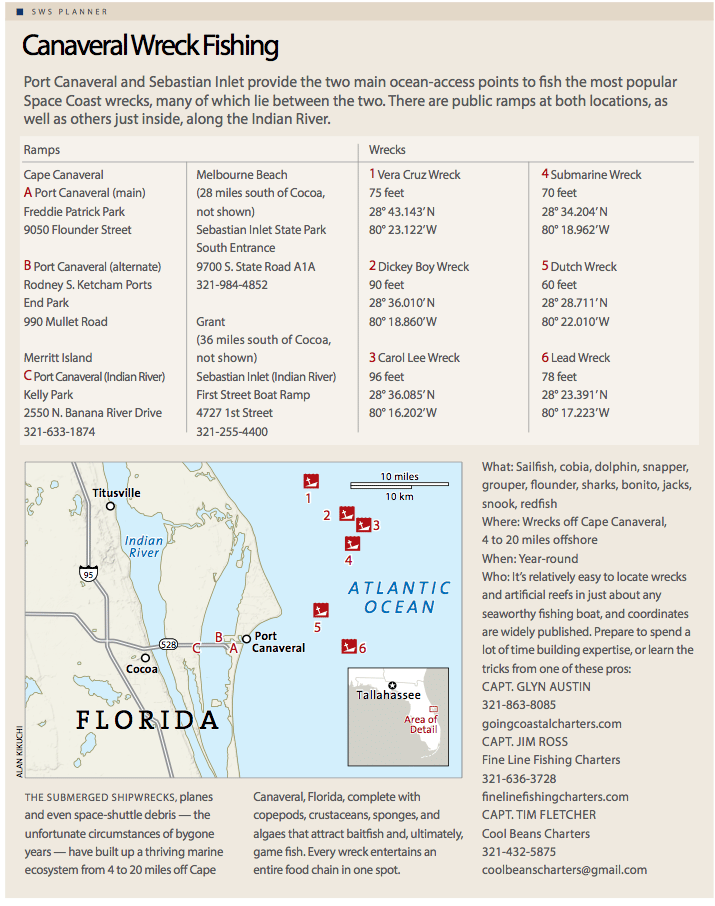“You never know what you’ll find on a wreck,” said Capt. Glyn Austin as we began to drift over the wreck some 100 feet beneath us off the central Florida coast. “It’s always a surprise, and you should be prepared to adapt to the conditions. You can target one species, and then be surprised and catch all sorts of other species, and change up your game plan by the minute. It keeps you on your toes.”
A top-down strategy works best when hitting a wreck. “We’ll see sailfish finning on the surface above the structure some days — and they are a bonus — but on an average day, the bulk of fish above a wreck will be cobia that hang 10 to 15 feet down. Kingfish and bonito zip through looking for the bait. The fast-moving fish always patrol above.” Cobia, sailfish and dolphin tend to stay on the up-current side of the wreck, according to Austin, whose strategy is derived from decades of fishing these wrecks in his home waters.
Wreck Life
“I’m on!” I shouted out as the rod bent as if I were stuck to the wreck below. “That’s the wreck, man. You’ve gotta be snagged,” said fellow angler Mark MacKenzie, not believing that the seriously loaded angle of the rod could be due to anything but a heavy snag. “Ho, man! I’m on too!” shouted Austin as his rod bent, the reel drag screaming. MacKenzie became a believer. Both Austin and I tap-danced around his 23-foot Shearwater for 15 minutes before a gold tinge surfaced from the depths, complete with ornery face and underslung jaw. “Snook, man! He’s huge!” Mackenzie grabbed the net, slid it under the 30-pound snook, and then turned around to see Austin bend over the gunwale to hoist a 25-pound jack crevalle. Just like that. One drift. Trophy snook and trophy jack. You couldn’t script a better one-two punch on the Canaveral wrecks, except for the fact that we already had eight keeper southern flounder up to 8 pounds in the cooler.
Spring Ahead
Springtime brings low 70-degree water that starts the cobia run, while the heat of the summer pushes water temperatures into the 80s, with snapper, grouper, kingfish, flounder and other pelagics moving onto the wrecks. “The magic really starts in April, and it lasts through fall and winter,” says Austin. “The only downtime is in July, when the thermocline flips and the water gets dirty and cool, which shuts down the bite, but it’s only for a week. Otherwise, year-round you are going to be into fish.”
Take It to the Top
A drift over the wreck produces best when working the top of the water column, as pelagic schools might not necessarily sit smack on top of the structure, but hang on the perimeter. Sharks can become a nuisance, harassing the live baits, and that is when Austin usually resorts to artificials. “If we’ve got species becoming aggressive, I throw fast-moving topwater poppers to get the attention of big jacks, bonito and king macks, or we can work small rubber lures, swimming plugs and spoons. We can bring the schools in and keep them there.”
Drop Down
Deep within that wreck, serious beasties live. One of the best-kept secrets of Canaveral wrecks, and Florida in general, is the southern flounder. Some serious flounder pounding goes down, and a limit of flatfish often comes easily. “Flounder seem to lie on the down-current side of the wreck, sucking down bait. I know commercial guys who spear 400 to 600 pounds a day on the wrecks, so you know the bottom must be littered with them. And they are all big fish: not the bay fish of 1 to 2 pounds, but doormats, 4 to 10 pounds,” says Austin.
The go-to flounder rig is a fish-finder slide setup with a live pogy nose-hooked on a 5/0 circle hook, dragged along the bottom. Gigantic grouper like reds, gags and goliaths also populate nearshore wrecks. “We released a 12-pound jack one time, and as it was fluttering back down in circles, a 400-pound goliath came up and inhaled it 5 feet from the surface,” says Austin. The largest of all Florida red snapper call wrecks home. Both grouper and snapper are suckers for a well-presented metal or bucktail jig. Prospect a wreck by dropping a jig to the ground floor, bounce it hard on the bottom with tapping strokes, and then raise it a foot or two before letting it hit bottom again. The flash and flutter attracts grouper, snapper and sea bass. Snap-twitch that jig a few feet up in the water column, and you’ll get ham-hocked by cobia or kingfish lying in wait to pick off the bait fish. The final approach is to speed-jig. Drop a jig, and yo-yo it back to the surface, and amberjack, false albacore, king mackerel and jacks will pounce on it, ripping off blistering runs. Anchoring with the stern directly over the wreck allows for a more productive, straight up-and-down jig presentation, as opposed to working it at an angle where the jig looks unnatural.
Treasure Hunt
The shifting shoals off Cape Canaveral notoriously claimed many a treasure-laden pirate ship over the centuries. Other ships were World War II casualties of war, while even others simply fell prey to the whims of the Atlantic. Nowadays, the real bounty lies in the diversity that the wrecks from centuries past give up in the form of game fish and good times. Pick up a chart, plug in the numbers of a wreck, and prepare to unearth some serious piscatorial treasures off Florida’s Space Coast.
